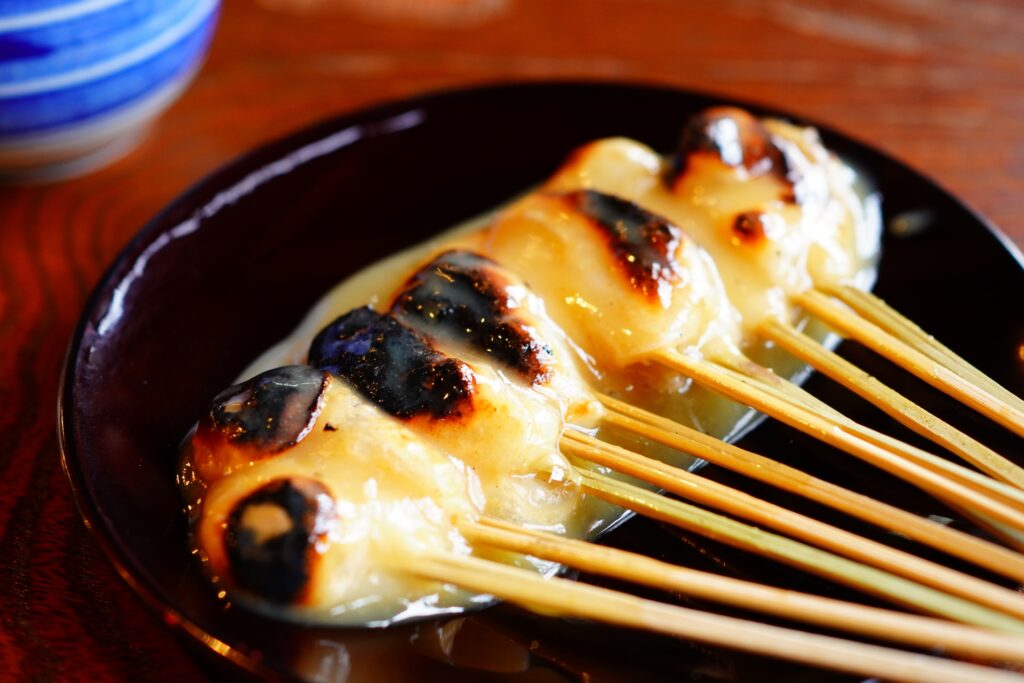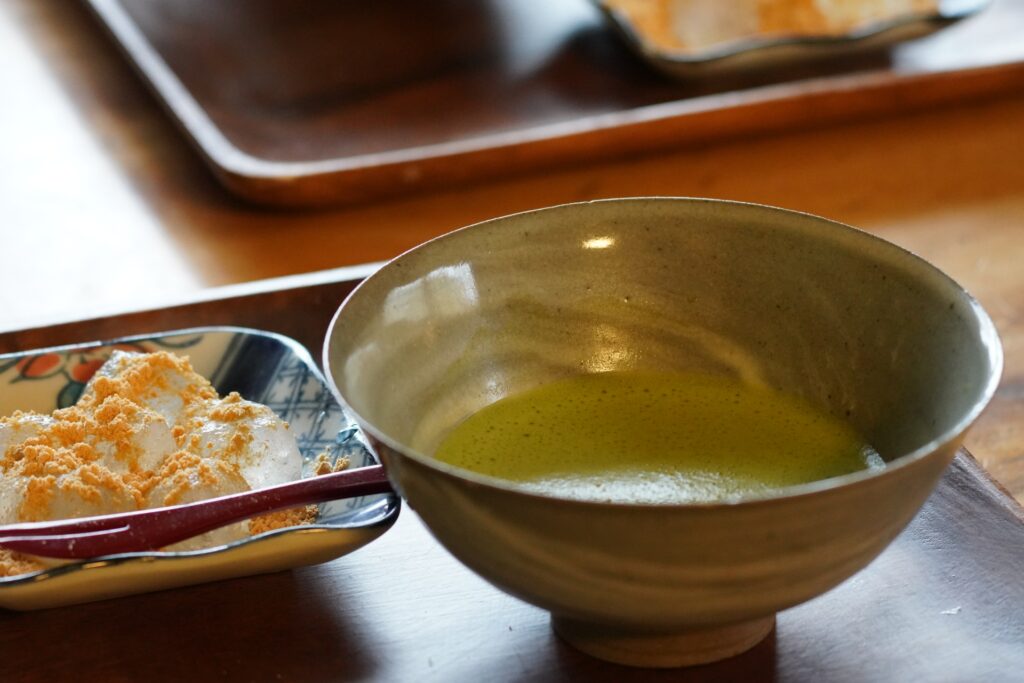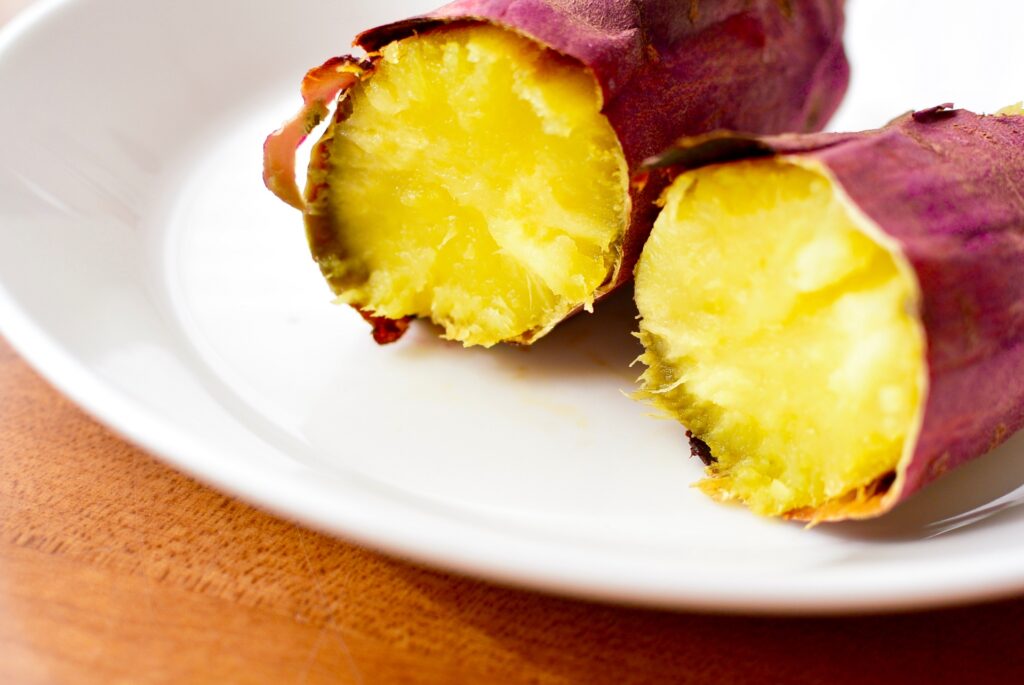Kyoto, with its beautiful seasons, has always captured the hearts of visitors. In spring, the cherry blossoms bloom, in summer, the riverside terraces offer cool relief, and in autumn, the city is blanketed in the vibrant colors of fall leaves.
Once the capital of Japan, Kyoto has preserved its rich culture and history, with numerous temples, shrines, and traditional sites that offer a glimpse into Japan’s past.
In winter, when the weather turns cold, Kyoto also offers a unique selection of sweets that warm both the body and soul.
Let me introduce some sweets that you should try to fully experience Kyoto’s charm during the colder months.
“Ichiwa” and “Kazariya”
Open : 10:00 AM – 5:00 PM, Closed on Wednesdays
Note: Closed during the year-end period from December 16th to December 31st.
Introduction :
One of Kyoto’s most beloved winter sweets is “aburi mochi,” which are rice cakes grilled over charcoal and coated in sweet soybean flour. These sweets are glazed with a special white miso from Kyoto, creating a perfect blend of savory and sweet flavors.
Imamiya Shrine, located in the northern part of Kyoto, is famous for this treat. The custom of offering grilled rice cakes to the gods dates back to the Heian period, when people believed it would bring good health and ward off illness. Today, the “aburi mochi” is considered a symbol of protection and is known as a “yaku-yoke” (good luck) sweet.
The shops “Ichwa” and “Kazariya” have been making this treat for generations, and their aburi mochi is loved by both locals and visitors alike.
Skilled craftsmen carefully grill bite-sized rice cakes coated in soybean flour, then glaze them with traditional Kyoto white miso to create the famous “aburi mochi.” This is a well-known treat in Kyoto.

“Nakamuraken”
Open : 10:00 AM – 5:00 PM, Closed on Wednesdays
Note: Closed during New Year’s from December 26th to January 2nd
Map : Nakamuraken
Introduction :
Located near the Katsura Imperial Villa, “Nakamuraken” is a traditional Japanese sweet shop that also serves as a cozy café. Katsura Imperial Villa, located along the western bank of the Katsura River, is a famous historical site known for its beautiful strolling garden and traditional Japanese architecture. It is considered one of the finest examples of Japanese gardens and is associated with the Japanese imperial family.
Nakamuraken, which has been around since the Meiji era, offers warm, comforting sweets during the autumn and winter months, such as zenzai (sweet red bean soup), oshiruko (another sweet red bean soup), abekawa mochi (mochi with soybean flour), and isobe maki (mochi wrapped in seaweed). These are classic Japanese winter treats made with mochi, an essential part of Japanese cuisine.
The shop’s traditional Japanese house setting provides a relaxing atmosphere, and the sweet taste of the fragrant soybean flour and smooth red beans will surely warm you up, making it a perfect break from the cold Kyoto weather or your sightseeing adventures.
Additionally, Nakamuraken is conveniently located near popular Arashiyama attractions like Togetsu Bridge, Suzumushi Temple, and Matsuo Taisha, making it a great place to stop by while exploring the area.

”Koukou”
Open : 11:00 AM – 7:00 PM, Closed on Wednesdays.
Map : Koukou
Introduction :
One of Japan’s winter essentials, alongside mochi and dango, is the satsumaimo (sweet potato).
Harvested in late summer to autumn, the sweet potatoes are aged and sun-dried to create hoshi-imo (dried sweet potatoes), while others are slowly cooked over low heat using charcoal or stones, resulting in the beloved ishiyaki-imo (stone-baked sweet potatoes). These treats are enjoyed throughout the winter months in Japan.
One such delicacy is the tsubo-yaki-imo (pot-baked sweet potato), where sweet potatoes are carefully roasted over charcoal in a clay pot, drawing out their natural sweetness and creating a rich, golden treat. This is a quintessential Japanese winter snack, often enjoyed as a healthy dessert.
The Koukou shop is conveniently located near Nijo Station, with easy access to public transportation, including JR and subway lines.
It’s also close to the historic Nijo Castle, a UNESCO World Heritage site, offering visitors both a taste of Japanese tradition and a chance to explore a significant piece of Japan’s history.

Conclusion
Enjoy Kyoto in Light Clothing!!
How was it? We’ve introduced some recommended winter sweets to accompany your sightseeing in Kyoto. Each of the shops we mentioned offers a taste of Kyoto’s unique flavors, blending history and tradition.
During the cold winter months in Kyoto, why not warm up your body and spirit with these winter treats while enjoying the atmosphere of the city’s temples, shrines, and streets?
All the shops we’ve introduced are located near famous historical landmarks, so you can explore Kyoto’s rich history as you wander.
Kyoto’s narrow alleys and busy streets can get crowded, especially near public transport stations. To ensure a hassle-free sightseeing experience, make sure to travel light by using our BagDrop service!!
※Please note that the information about the shops and transportation may have changed. We recommend checking for updates before your visit.
